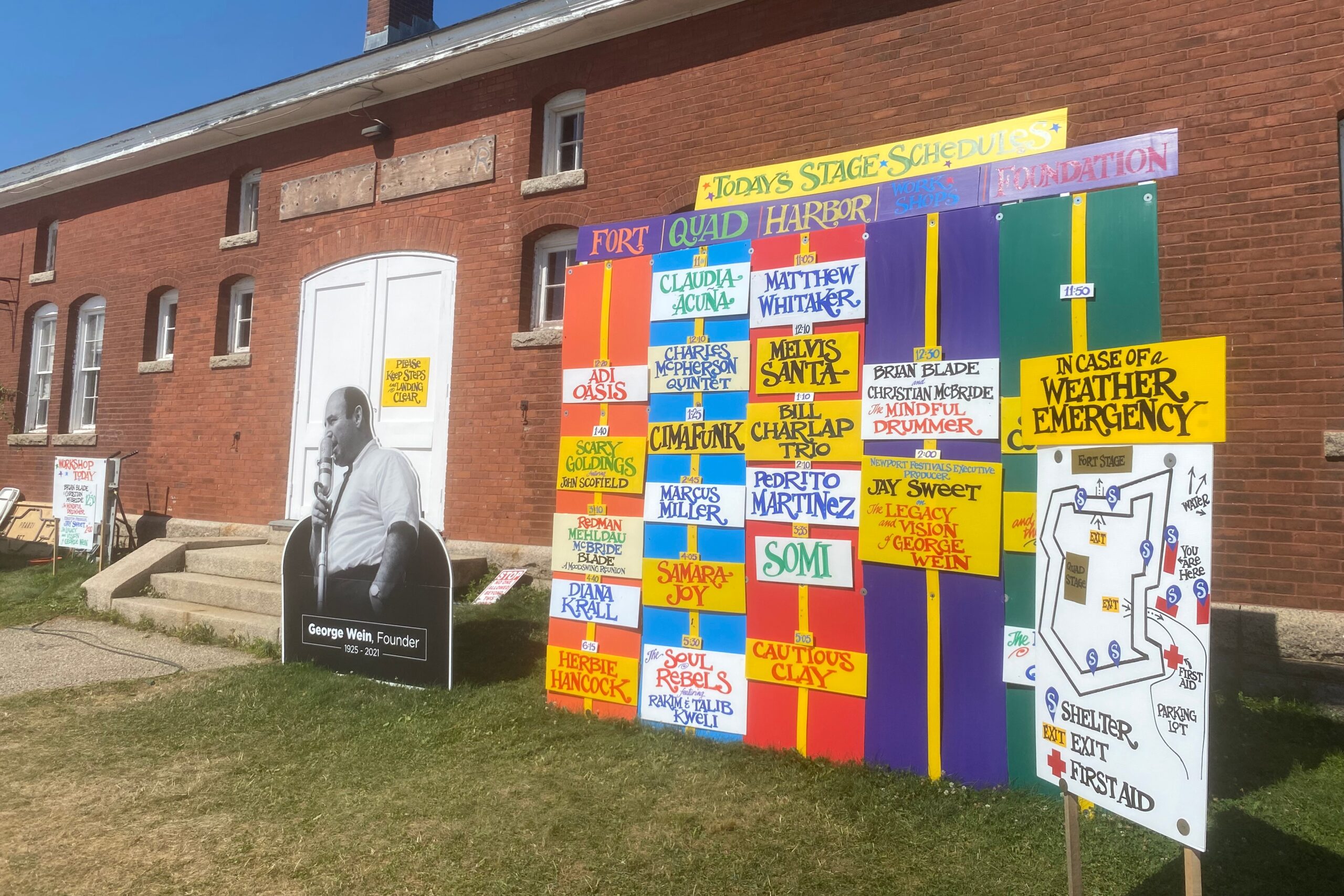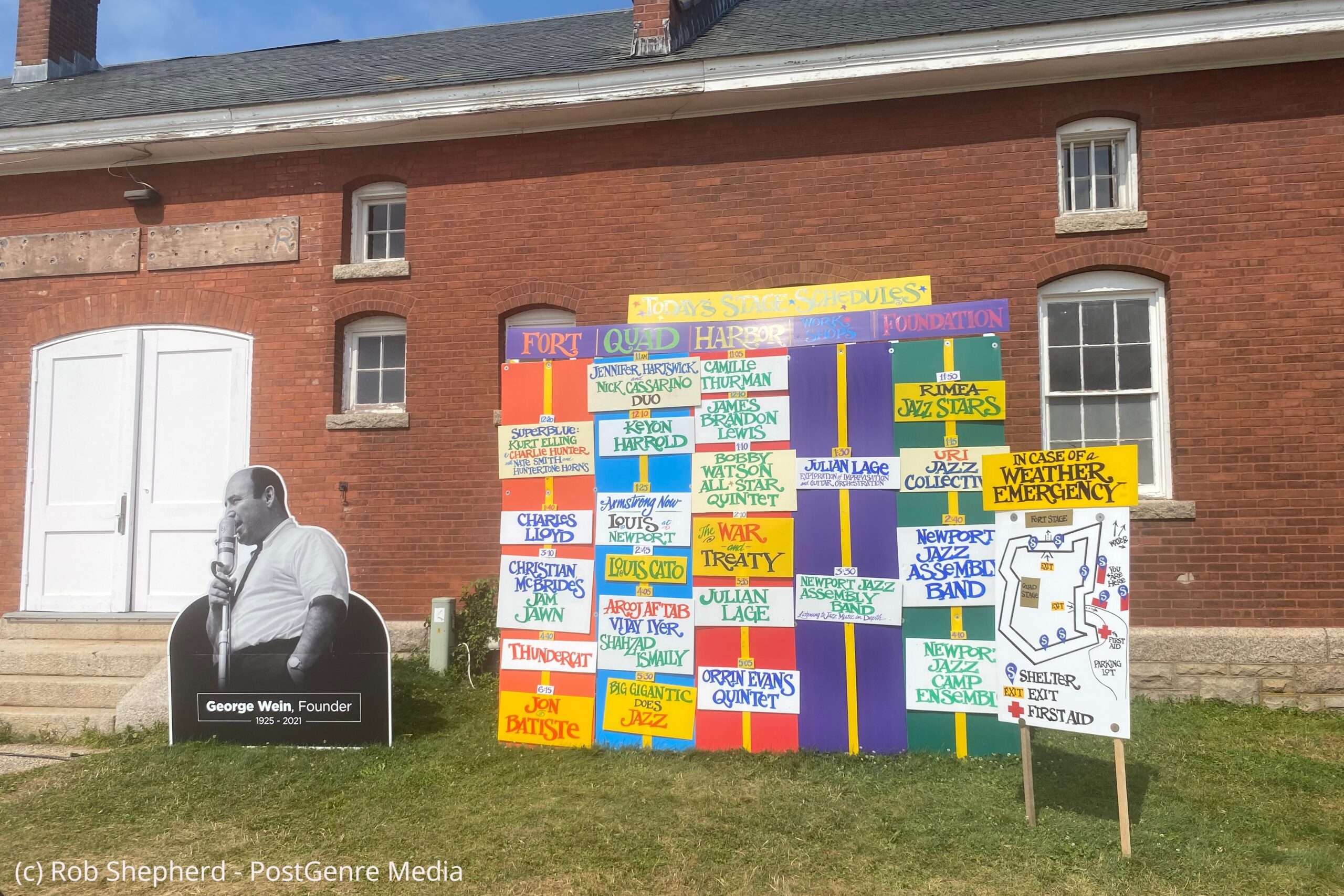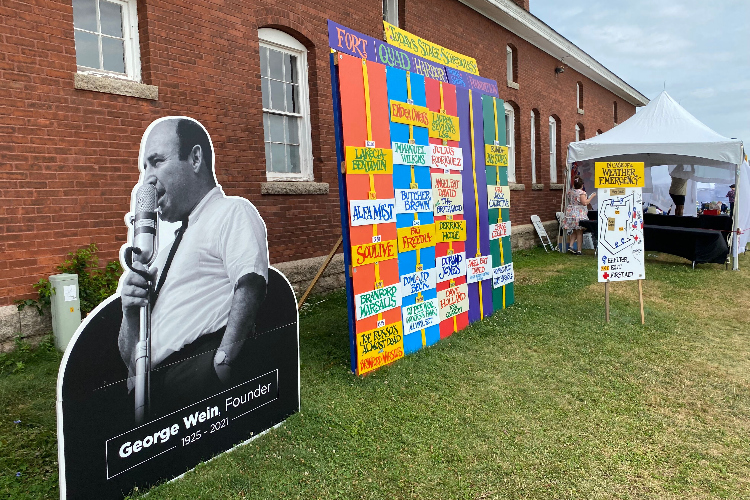Observations from Day Three of the 2023 Newport Jazz Festival
|
Getting your Trinity Audio player ready...
|
Jazz music and dance have long had intertwined histories. For one, the music of people like Duke Ellington, Count Basie, Benny Goodman, and the Dorsey brothers fueled the widespread craze of swing dancing throughout the 1930s and 40s. But, over time, the music changed. Bebop expanded chordal structures beyond their traditional realm. The avant-garde movements went even further and, in some cases, abandoned them entirely. Add to it the shifting role of the drummer from serving primarily as a rhythmic timekeeper to providing an additional instrumental voice, and it is easy to see why many think there is no longer a connection between the music and dance. On Sunday, August 6, 2023, the Newport Jazz Festival highlighted the strong bonds that still result between the two art forms.
Before getting into how the final day of the 2023 Newport Jazz Festival connects to dance, it is perhaps best to first discuss how it did not. For the last few years, a Facebook commentator has castigated the Festival for presenting too much of what he calls “dance music.” When pressed to define “dance music” or provide examples, he, perhaps unsurprisingly, could not. However, his commentary has made clear that he ascribes to a Crouchian purist view of the music. This perspective only debases the artistic brilliance of musicians who do not fit their mold. Further, it also ignores this particular Festival’s long history of presenting diverse acts. But in a broader sense, the use of the term “dance music” as some distinguishing line between “jazz” and “other” was undermined by the music presented on that Sunday. The day of the weekend that perhaps most reflected traditional music nevertheless showed how such is indeed “danceable” as well.
Starting at the Harbor Stage, Matthew Whitaker led a quintet that drew direct lines from soul jazz to R&B. A super funky organ-led rendition of Eddie Harris’ “Freedom Jazz Dance” became a richly voiced version of Chick Corea’s “Spain.” Moving over to the piano, the blind prodigy presented Dave Brubeck’s “Blue Rondo Ala Turk” in which a solo cited the old spiritual “Wade in the Water” but also veered into electronic synthesizer territory. The performance concluded with Marvin Gaye’s rousing “What’s Going On” which led most of the audience to sing. The consistent thread throughout the set was the ensemble’s hard groove that made several listeners move as they played.
Up on the Quad Stage came Charles McPherson. The eighty-four-year-old saxophonist first played the Festival in 1971 as part of Charles Mingus’ band. Here, he presented a group that included Terrell Stafford on trumpet, David Wong on bass, Billy Drummond on drums, and Jeb Patton on piano. While their music mostly lacked the funkiness of Whitaker’s performance, it nevertheless compelled audiences to dance. Exploring those connections between music and dance is familiar terrain to McPherson, who had released an album specifically dedicated to the topic: Jazz Dance Suites (Chazz Mack, 2020). A song from the record, “The Wedding Song,” which he had written for the San Diego Ballet, was a highlight of the set. Another was the high-velocity standard “Cherokee” that put listeners into a frenzy.
Back on the Harbor Stage was pianist Bill Charlap with brothers Peter Washington on bass and Kenny Washington on drums. The trio outing examined the compositions of the legendary Duke Ellington. “Love You Madly”, “Caravan” (technically a Juan Tizol and Ellington co-creation), and “Mood Indigo” were played fairly traditionally yet swung hard as they extracted elements from each piece that underscored Duke’s mastery of substantive danceable music, tapping into the same fervent magic that drove crowds to a craze at Newport in 1956.
At the Fort Stage came Scary Goldings. Itself, a meeting of Scary Pockets (Jack Conte and Derek Moore) and Larry Goldings, the band was joined by John Scofield and surprise guest Tal Wilkenfeld. The former gave nods to the Blues on “Cornish Hen” and his time with Miles on “Professor Vicarious.” The latter provided a heavy groove that thoroughly made it, perhaps, the funkiest set of the entire weekend. The performance was so funky that it made even this author’s one-year-old child – who could barely walk – dance and clap throughout the songs.
Immediately following Scary Goldings came “A Moodswing Reunion,” a meeting of Joshua Redman, Brad Mehldau, Christian McBride, and Brian Blade. The quartet has reconvened a few times, even releasing two albums – RoundAgain(Nonesuch, 2020) and LongGone (Nonesuch, 2022) over the last few years. But this conference at Newport was particularly special as it marked the thirtieth anniversary of their performance at the 1993 Newport Jazz Festival; the group’s first gig as a band.
Three decades older, the group’s members have morphed from Young Lion to heavyweights of the music. In the process, each went out on their own paths and brought ideas and energy experienced away from the group back to it. Elements of Redman’s experimentation with strings (Walking Shadows (Nonesuch, 2013)) and electronics (Momentum (Nonesuch, 2005)) subtly presented themselves, even in a set lacking both instrument types, through the emphasized percussiveness of his solo on “Undertow.” Similarly, Mehldau’s several solo works for Nonesuch, exploring everything from the music of Bach to that of Radiohead, provided a piano line on his original “Moe Honk,” that could have, in its delicacy, capably stood on its own. McBride, in turn, gave his part life, by hinting at the funk that lies deep in his heart and the many projects he has been part of over the years. Blade brought the contemplative desolation of Landmarks (Blue Note, 2014) and folksiness of Mama Rosa (Verve Forecast, 2009) to his fluidly moving rhythmic lines. But key to the performance was the importance of feeling the music they were producing. As noted in the liner notes for the quartet’s original outing on MoodSwing (Warner Bros., 1994), “Jazz is about feeling, communication, honesty, and soul.” The audience certainly felt the earnestness of the ensemble’s messages, as they reacted with their bodies as much as with their minds.
In the Quad, Samara Joy’s second appearance at Newport – and first since winning the Grammy Award for Best New Artist- showed audiences why, though only in her early twenties, she is already one of today’s most compelling vocalists. An old soul, she exuded class and elegance. From a soulfully melancholic rendition of “Stardust” to an indescribably beautiful approach to Charles Mingus’ “Reincarnation of a Lovebird,” the singer enthralled the audience and made many romantically sway with their partners to the music. As Joy announced from the stage, “I want to stay here in Newport.” It was clear the audience wanted that too.
Down on the Harbor Stage, multi-instrumentalist Joshua Karpeh – better known as Cautious Clay – shared music from his excellent family historical narrative, Karpeh (Blue Note, 2023). As on the album, he provided a scorching tenor sax solo on “The Tide is My Witness” and laidback vocals on “Ohio.” In the process, he pulled funk, R&B, and jazz into a unified, highly danceable, form.
There is often a misconception that the only dance appropriate for hip hop is break dancing. In the Quad, The Soul Rebels – joined by guests Rakim and Talib Kweli- decimated this myth. In presenting an expansive lineage of Black musical excellence that directly connects New Orleans brass band to hip hop, the group incorporated all kinds of dance associated with the music along that lineage. Their unique marriage of funk, hip-hop, and jazz could come only from the Crescent City. Musical references to figures like Professor Longhair brought the point only further home. The high-energy set began with chants of “Get on Up! Get on Up Now!” but based on what they were producing on stage, audiences needed very little coaxing.
And finally, we get to the maestro – or as Christian McBride described him in introducing him, the king- Herbie Hancock. The pianist, who has performed at Newport so many times over the years, closed out the Fort Stage with a group that included frequent collaborators James Genus and Lionel Loueke, young drummer Jaylen Petinaud, and the particularly welcome addition of fellow NEA Jazz Master Terence Blanchard. Interspersed between the leader’s classic compositions “Actual Proof” and “Chameleon” were a series of originals that further proved that while Hancock has had many hits in his past, he’s still pushing forward musically. Particularly touching was Blanchard’s arrangement of a song by Hancock’s longtime sonic traveling companion, the late great Wayne Shorter. “Footprints” was not only dedicated to a friend and a standard but uniquely tied together Hancock’s decades of performances at Newport as it was a song he performed in 1966 as part of Miles Davis’ Second Great Quintet, his second time at the Festival. While there was hefty weight to Hancock’s set, it also emphasized his role as living funk royalty. It gave that day’s listeners one last chance to groove before next summer.
Come and dance to the music. The 2024 Newport Jazz Festival will take place from August 2, 2024 to August 4, 2024 at Fort Adams in Newport, Rhode Island. More information is available on the Festival’s website. We will be providing coverage live from the event.



